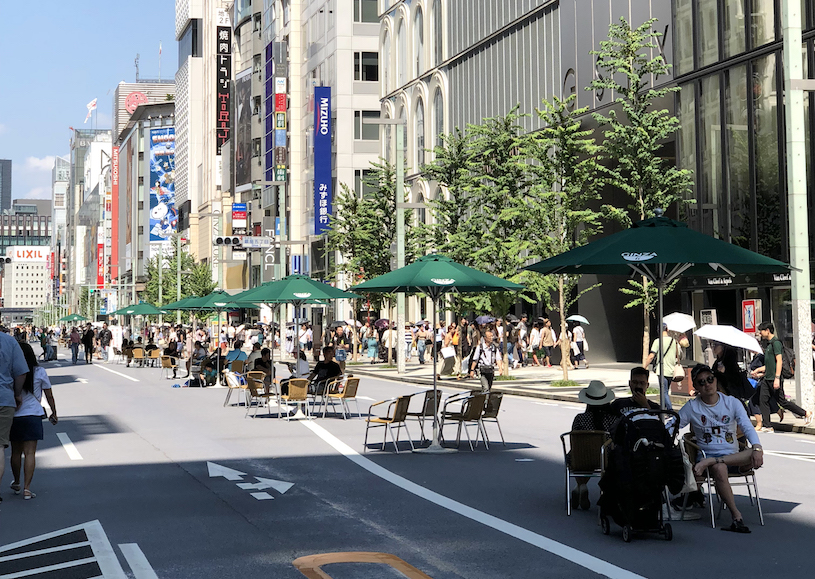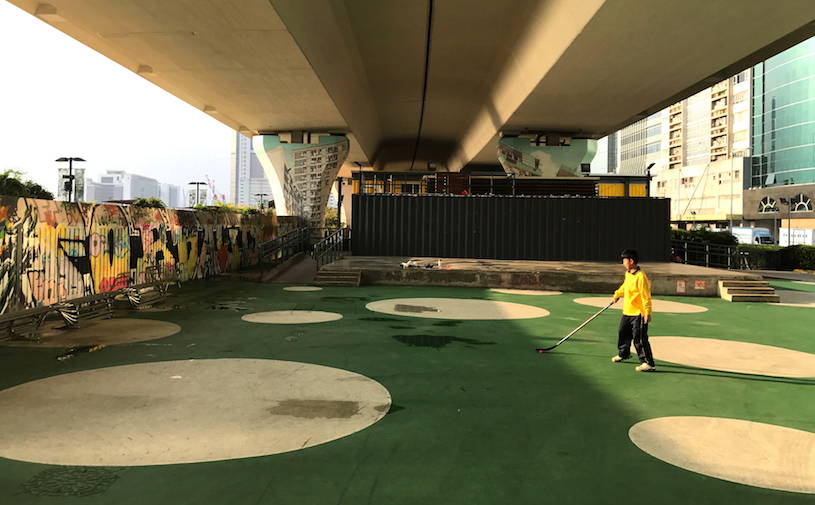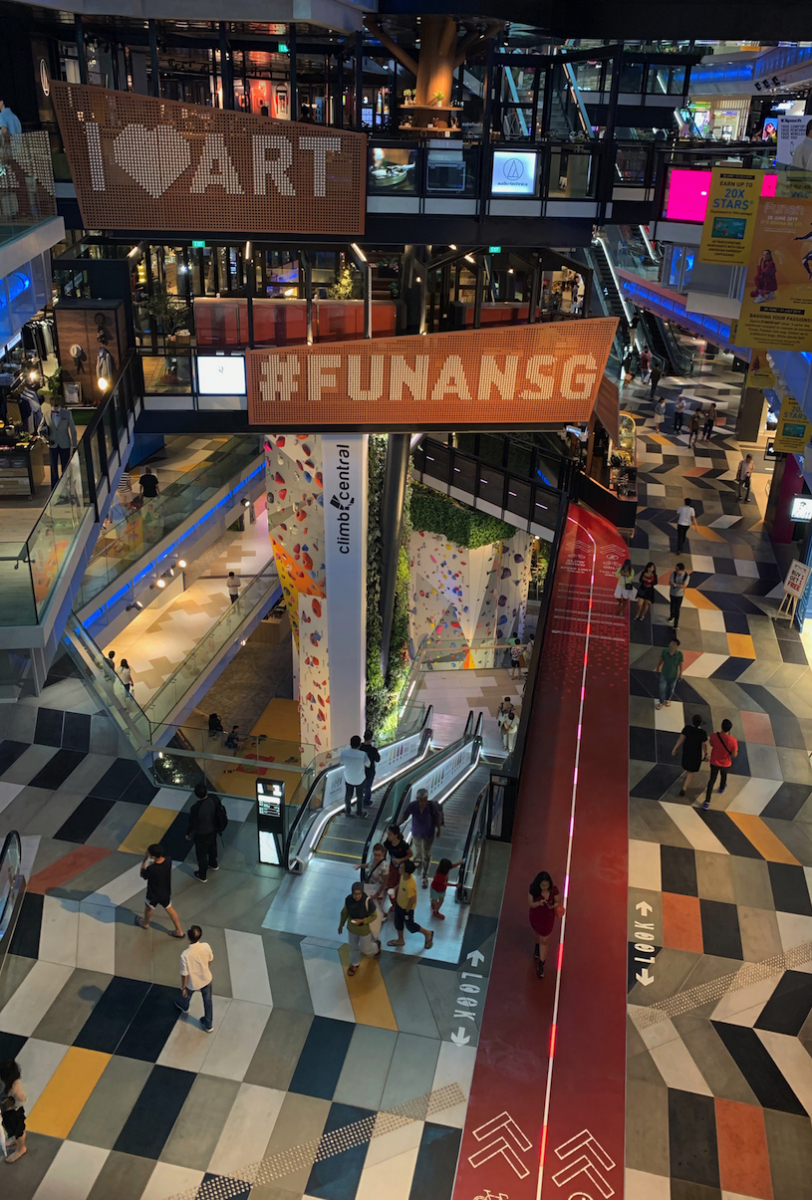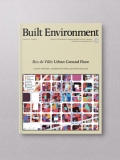A time to rethink and reimagine sharing space
Ye Zhang & Jeffrey Kok Hui Chan present their guest edited issue of Built Environment, 46(1) on Space-Sharing Practices in the City, and call for urbanists to rethink how we might reshape sharing and togetherness in space.
It is perhaps improper to recommend sharing now – especially sharing space. On the one hand, it is clearly inappropriate to promote and foster sharing in a time when public health requires people not to share anything with anyone. But on the other hand, it is precisely when isolation and social distancing are foregrounded that a reflection on sharing and sharing practices becomes even more perspicuous.

Figure 1: Innovative sharing of space – pedestrianised street, Ginza, Tokyo
As we pen these words, the Covid-19 is rapidly ravaging the world with no end in sight. More than 100,000 people around the world have been infected and fatalities are mounting. To counter the rapid contagion, most large-scale public events have been cancelled across the world. And schools, universities, and community centres are closed in many places. People are choosing to stay away from the crowd, and especially away from public squares, shopping malls, cafes, and restaurants, where they used to enjoy sharing space, experiences, and conversations with others. Even on the street, people walk hurried steps, eyes nervous but otherwise expressionlessly concealed behind surgical masks. Instead of sharing and togetherness that characterized urbanity just a few weeks ago, social distancing, hoarding (or the German coinage, Hamsterkauf – to store as much food as possible like a hamster in its cheeks), and quarantining have become de rigueur. Furthermore, the Covid-19 outbreak has given rise to even more unkind sentiments of racism, isolationism, and irrational fear – sentiments that compromise any chance for togetherness, and certainly everything that undermines the social prospects of constructive sharing.
The gravity and impacts of this present global health crisis on vulnerable populations, livelihoods, economies, societies, and cities should not be underestimated. However, at the same time, the situation evolving around Covid-19 invites all of us to question and think critically about the practice of sharing that has been formative for the human civilization throughout time. Especially relevant to our urban life today, how should we understand the different new sharing practices that have emerged alongside the ubiquity of disruptive technologies in the context of a rapidly increasing urban density? What are their economic, policy, governance, and organisational issues? How does the existing urban environment condition these new forms of sharing practice, and conversely, how might they shape and transform our city? And, what are the new socio-spatial relations, and their corresponding spatial environments, that can be produced by these sharing practices?

Figure 2: Innovative sharing of space – underneath an expressway, Hong Kong
As professionals of the built environment, it has dawned on us – with no small irony – that we have assembled this issue on Space-Sharing Practices in the City in response to the questions above and especially in this precipitous moment when sharing any space with others may be the very last thing on anyone’s mind. In tandem with this issue, we also have a forthcoming book, Sharing by Design, to be published in April, that will push these ideas further by discussing how to design our built environments for sharing and togetherness in a world increasingly torn asunder by geopolitical conflicts, unprecedented inequality and environmental destruction. We believe that not only can we design the physical environment of our city into a shareable resource, but that we can also amplify the affordance for sharing by design within spatial environments that have been intentionally designed for the purpose of cultivating sharing behaviours and relations.
Now confronted with Covid-19, what should be our response with respect to sharing and our future built environment? Should we give in to the present conscience collective of fear, schism, isolationism, and relegate sharing and togetherness in space as delusions? Or do we hope in optimistic bravado, that the disease, like all bad things, will pass and then business will become as-usual again? Or should we simply comply with the momentum of technological determinism and passively accept virtual sharing and togetherness as the ubiquitous feature of a digitized world?

Figure 3: Innovative sharing of space – Funan Centre, Singapore
On the contrary, we would like to propose the following: this uncertain moment of misfortune is an opportunity to rethink, and more importantly, to reshape sharing and togetherness in space. Virulent diseases played a key role in the development of the urban planning discipline in the nineteenth century and reshaped modern cities into even more interconnected and shared networks without compromising public health. There is no reason to think that the Covid-19, and its destructive impacts that have yet to play out fully, will not do the same for the urban environment in the future. Architecture, urban design and planning will change because of this contagion – and we argue that these disciplines and professions will change for the better. As professors in our respective universities, we are on the frontline of improvising research and teaching to respond better to the uncertain challenges that the Covid-19 has imposed on our everyday practices. Even when we are no longer allowed to be physically co-located with our students and colleagues, our co-presence and collaboration with them must continue unabated. In other words, in these trying times, we may not be able to share in certain ways, but this should not stop us from discovering and designing more robust practices of sharing virtually. Looking towards the future, instead of de-emphasizing sharing in space, we should instead re-imagine different modalities of sharing, especially designing different ways to share space that are even more resilient and enduring under different, even unforeseeable, urban conditions. The social, political and architectural stakes, we insist, are too high to do otherwise.
On this note then, we invite our readers – students, colleagues and members of the built environment professions – to begin by exploring the articles of this new issue, and then rediscovering and rekindling the enduring embers of sharing in these uncertain times.
________________________________________________________________
As ever we welcome further Built Environment blogs & tweets on this theme!
All Images © author. All rights reserved


